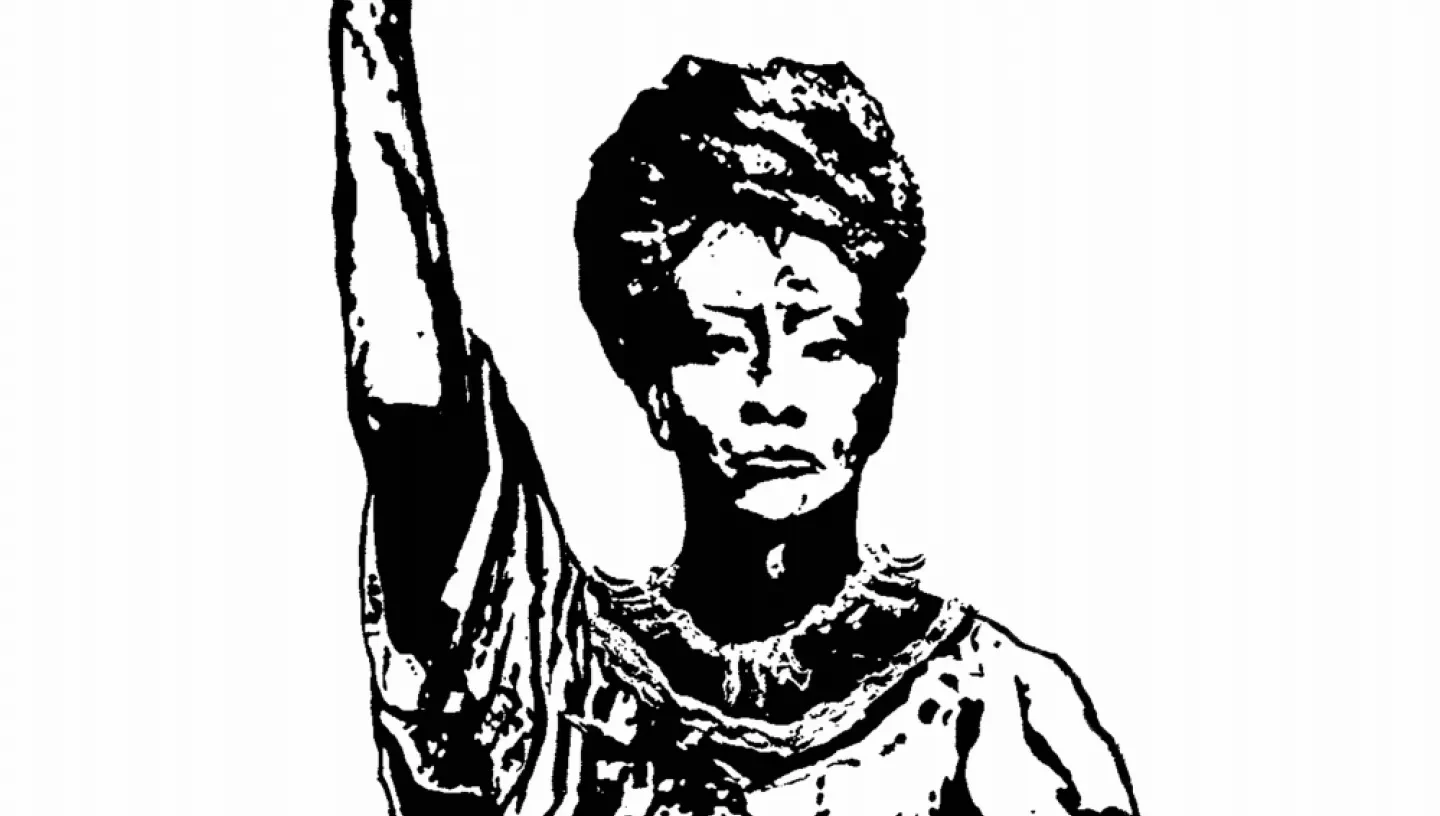
Find out about the influential and iconic resistance fighter, Nanny of the Maroons.
Have you tried the Nanny of the Maroons Trail in the National Maritime Museum?
Read below for more contextual information about Nanny, the transatlantic slave trade and female abolitionists.
Join us for Slavery Remembrance Day at the National Maritime Museum
Nanny of the Maroons (c.1686-c.1760)
Nanny of the Maroons, thought to have been born around 1686, led a community of formerly enslaved Africans called the Windward Maroons in Jamaica’s Blue Mountains in the early 18th century. Under Nanny’s leadership, the Windward Maroons fought a guerrilla war against the British, known as the First Maroon War, which lasted for many years.
Much of what is known about Nanny comes from oral accounts. Apart from the odd reference, little written evidence of Nanny’s life has survived. According to Maroon legend, ‘Queen Nanny’ was born in present-day Ghana, known as the Gold Coast. Some accounts insist that Nanny was never enslaved, but the likelihood is that she escaped from slavery shortly after arriving in Jamaica.
The Maroons’ mastery of guerrilla warfare made it impossible to defeat them in battle. Nanny’s military prowess and supernatural powers are believed to have played an important role in their prolonged and successful resistance. During the many years of warfare, the British suffered significant losses and were never able to defeat them.
The British had no choice but to sue for peace and a Treaty was signed on 20 April 1740 which brought an end to years of hostilities. The Treaty granted 500 acres of land to Nanny and her followers and guaranteed their freedom.
The village built on this land still exists and is known today as Moore Town or New Nanny Town. Its inhabitants regard the date the Treaty was signed as a national holiday, and the site of her grave is still revered.
Nanny is Jamaica’s only female national hero. A statue of Nanny has been erected, and her image can be found on Jamaica’s $500 note.
Maroon communities have survived to this day in Jamaica. Maroons are also to be found in Brazil, Puerto Rico, Suriname, Ecuador, Florida, Mexico, Venezuela and numerous other countries in North and South America. There are even some surviving Maroon communities on islands in the Indian Ocean.
Queen Nanny: Legendary Maroon Chieftainess (2016)
This one-hour documentary, directed by Roy T. Anderson, charts the story of Nanny and her incredible story of resistance
Bussa’s Rebellion
Bussa’s Rebellion (14-16 April 1816) was the largest revolt by enslaved people in Barbadian history.
Named after the man who led the rebellion, one of his collaborators was Nanny Grigg, an enslaved woman who worked in the house and had taught herself to read. Bussa, who was African-born (possibly from modern-day Nigeria), led around 400 rebels, both male and female. Although he was killed in the fighting, his supporters fought on until they were defeated by the colonial militia.
Bussa’s rebellion was one of several mass uprisings in the latter years of slavery. Together with the Demerara Rebellion in 1823 and the Baptist War in Jamaica in 1831-32, it sent shock-waves through the planter establishment, and helped pave the way for the Slavery Abolition Act of 1833.
For more information about Bussa’s rebellion, see:
Bussa's Rebellion at the National Archives
Hannah More
Hannah More (1745-1833) was born in Bristol, where she taught and began writing morality plays as a young woman.
Deeply religious, she was vehemently opposed to slavery and the Slave Trade. Her poem Slavery, written in 1788, makes an impassioned plea for emancipation.
A friend of William Wilberforce, who was also a leading Abolitionist, she wrote a number of plays and religious tracts in support of the Abolitionists’ cause. She also actively campaigned for the education of the poor.
Slavery and the Slave Trade
If you want to find out more about Slavery and the Slave Trade in general, visit any of the following websites: